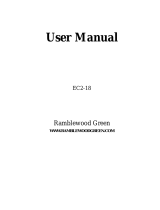
13
If a gas smell is noted, the gas intake to
the hob should be shut off and the room
ventilated. The gas installation and the hob
should also be checked by a specialised
technician.
Use flat-bottomed pans and check that
they sit squarely on the grid, so that when
food boils the pan does not slip (do not use
pans with a concave or convex base).
Only pans with a minimum diameter of 140
mm should be used on each burner. If you
wish to use a pan with a diameter of 120
mm or smaller, it should be placed on the
auxiliary burner.
Please note:
When the burners are in opera-
tion or have recently been in operation,
the hob will be hot in places and this
can lead to burns. Children should be
kept well away.
For safety reasons, we advise
that the instructions provided by the
gas supply company are followed and
that the supply tap is turned off when
the hob is not in use.
The device shall not be operated
for more than 15 seconds. If after 15
seconds the burner has not lit, stop the
device and open the compartment door
and/or wait at least 1 minute before
attemting a futher ignition of the burner.
In the event of the burner flames
being accidentally extinguished, turn
off the burner control and do not
attempt to re-ignite the burner for at
least one minute.
Anti-accidental turn system
on gas controls
On models without the safety
system (without the gas cut-off device),
the gas taps are equipped with a mechani-
cal system that prevents the controls from
being freely turned from the off position to
the on position (and, therefore, prevents
any accidental escape of gas from the bur-
ners) if the control has not previously
been pressed down.
If at any time while using the hob
you notice that a control can be turned
from the off position without it needing
to be pressed down beforehand (for
example: because of dirt which may
have got into and accumulated in the
gas taps) you should, for your own
safety, quickly notify the technical servi-
ce so that the problem can be rectified.
Safety system components
(fig. 4)
On hobs with the safety feature (those
models which have the letters AL), the gas
cut-off device is made up of these ele-
ments:
* The safety tap
* The safety thermocouple, next to the
burner
* The thermocouple-tap connection
The thermocouple sends an electric signal
to the tap which identifies whether the bur-
ner has a flame. During ignition, the tap
should be held down for around two
seconds, until the thermocouple has hea-
ted up and can send a satisfactory electric
signal to the tap. Should the burner go out,
the absence of a flame is detected by the
thermocouple, which makes the safety tap
cut off the flow of gas.




















